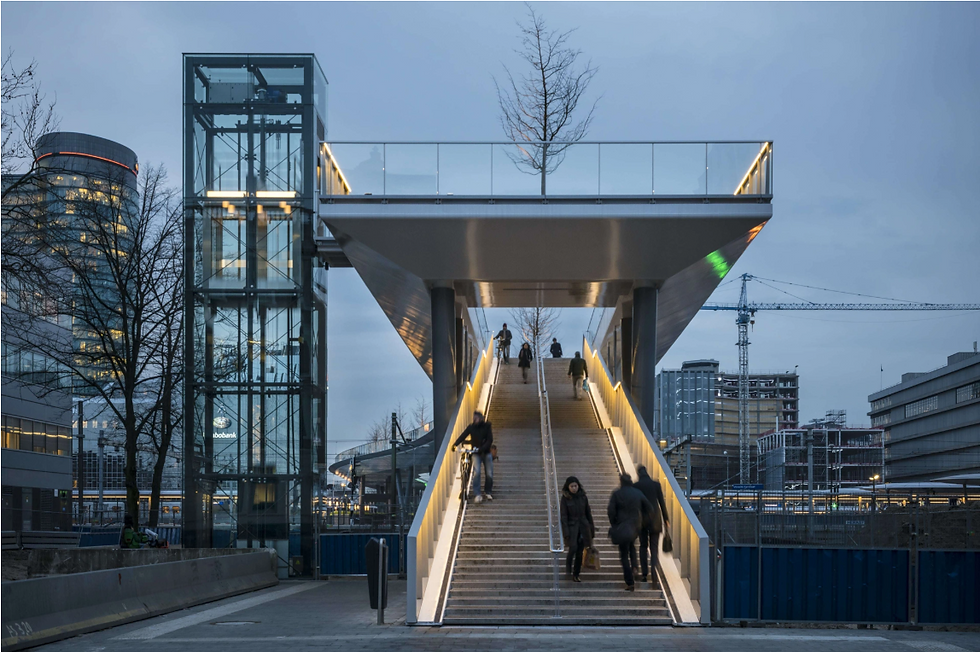Razende Reporters – The City of Steel
- TOPOS

- Dec 4, 2017
- 3 min read
Updated: Apr 16, 2023

Column by Gerben Hartgerink.
Since this year, Landscape Architecture and Spatial Planning students will report from a broad scope of places they are based during their international exchange. This results in a series of local reports from around the globe, concerning local reporters related to spatial issues, lots of photos and essays with more airy observations and anecdotes from their new location. To kick off the series, Gerben Hartgerink will dive into the revitalisation of post-industrial Sheffield. Enjoy the series!

Skyline from the Arts Tower
“A hideous, frightful, ugly, stinking industrial hell hole” or just ugliest town in the Old World according to George Orwell in 1930. Sheffield is the city Orwell is talking about, and who am I to disagree with him? Standing in the cold September rains in front of the train station. I’ve got the opportunity to study in this hell hole for one semester in the department of Landscape, this is gonna be great!
Today Sheffield is ranked as the sixth greenest city in the UK and officially safest large city in UK. So you can probably state much has changed since the visit of mister Orwell. The origins of the ugliness and its poor living conditions can be traced back to its incredible urban growth as a consequence of the Industrial Revolution. Sheffield is quite famous for its steel production. This is because in the 1740s Benjamin Huntsman, a clock maker in Handsworth (now a suburb of Sheffield), invented a form of the crucible steel process for making a better quality of steel than had previously been available. In 1850 the production of steel in Britain was about 50,000 tons. About 85% of this was produced in Sheffield. This revolution in steel production led to a rapid population growth.

Sheffield City Council
Sheffield’s association with metalworking is almost as old at the city itself. Evidence of cutlery dates back more than 700 years. The hills next to the city provided it with the necessary raw materials for the industry to flourish. Together with its seven rivers it provided the production of steel way before the industrial revolution. The rapid population growth and the high industrialisation has, next to its benefits for the economy, some very negative consequences which made it into the 1984 dystopia sketched by George Orwell. Much has changed though: Sheffield has taken crucial steps towards becoming a European green city with the publication of new report (Sheffield’s green commitment, 2016). Estimated to contain over two million trees, Sheffield has more trees per person than any other city in Europe. The 78 public parks and the beautiful Peak District in its backyard make the city as green as it is today.

Winter Gardens
Still the city stinks of its industrial past. At first, as a countryside boy, it was quite hard to get used to a big city like this. The buildings are a total mess. On one corner there is beautiful gothic church and next to it there is a post-war flat. Different building styles are mingled together all over the place which make the city look like a mess, but within this mess there is sincere beauty to find.
It’s no surprise to find a department of Landscape in a city with such a rich history of Urban Greening. It’s even considered to be among the best places to study Landscape Architecture in the UK. The department of Landscape’s courses are mostly focussed on Urban Design. Making the world a better and most of all a more green place is also the major focus of the urban design. This is just like in Wageningen which is not surprising considering Sheffield’s history of Urban Greening. Also considering the overall improvement of the quality of life from its industrial roots to its more people friendly atmosphere during the 20th century. With the ever growing urban environment I think the urban aspect of the studies is very relevant for our future.

Peak district, Sheffields backyard
The city itself is a very nice place to study as well. Although it’s a big city, it has this cosy village vibe going on. Especially in the Student’s Union, which is actually the biggest in the whole UK, you cannot walk around there without meeting someone you know (even me and I’ve only been there for four weeks). The locals themselves are very friendly (like proper Northern British people). People keep calling you, darling, love, love and love. Also the restaurants and cafes are really nice. Some of their names still refer to its rich industrial history in the Steel History. In the end I can say, I feel at home in this hell hole!
www.sheffield.ac.uk/landscape
december 4, 2017







Comments